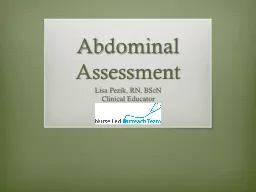PPT-THE LARGE BOWEL أعداد
Author : norah | Published Date : 2024-01-03
الدكتور زيد علي مجيد جراح اختصاص TUMOURS OF THE LARGE INTESTINE Benign The term polyp is a clinical description of any elevated tumour
Presentation Embed Code
Download Presentation
Download Presentation The PPT/PDF document "THE LARGE BOWEL أعداد" is the property of its rightful owner. Permission is granted to download and print the materials on this website for personal, non-commercial use only, and to display it on your personal computer provided you do not modify the materials and that you retain all copyright notices contained in the materials. By downloading content from our website, you accept the terms of this agreement.
THE LARGE BOWEL أعداد: Transcript
Download Rules Of Document
"THE LARGE BOWEL أعداد"The content belongs to its owner. You may download and print it for personal use, without modification, and keep all copyright notices. By downloading, you agree to these terms.
Related Documents














